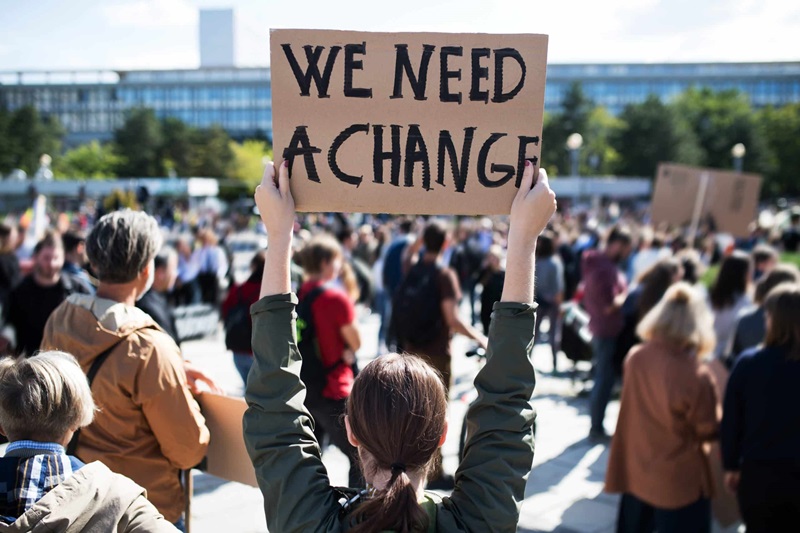
10 social justice issues demanding our attention
The US-Mexico border has seen a surge of migrants in recent months, reaching the highest levels in two decades. In December 2021, border agents encountered more than 173,000 migrants, a 64% increase from the same month in 2020. Most of the migrants are from Central America, fleeing poverty, violence, and corruption in their home countries. Many are also seeking to reunite with their family members who are already in the US.
President Joe Biden, who took office in January 2021, has pledged to reverse the harsh and restrictive immigration policies of his predecessor, Donald Trump, and to create a more humane and orderly immigration system. Biden has taken several steps to fulfill his promise, such as ending the construction of the border wall, halting the “Remain in Mexico” program that forced asylum seekers to wait in Mexico for their cases to be processed, and restoring the Deferred Action for Childhood Arrivals (DACA) program that protects unauthorized immigrants who came to the US as children from deportation.
Attraction
Biden’s immigration policies and rhetoric have been widely perceived as more welcoming and encouraging by migrants, who see him as a friend and an ally, and who hope to benefit from his reforms and initiatives. Biden’s immigration policies and rhetoric have also been widely criticized and blamed by his opponents, who accuse him of creating a border crisis and a national security threat, and who demand him to reinstate Trump’s policies and to deter and deport migrants.
Some of the ways that Biden’s immigration policies and rhetoric attract more migrants to cross from Mexico to the US are:
Ending the “Remain in Mexico” program: Biden’s decision to end the program that required asylum seekers to stay in Mexico while their claims were adjudicated has motivated many migrants to cross the border and seek protection in the US. The program, which was implemented by Trump in 2019, had left more than 70,000 migrants stranded in dangerous and squalid conditions in Mexico, where they faced violence, extortion, and discrimination. Biden has allowed about 28,000 migrants who were enrolled in the program to enter the US and continue their cases, and has suspended new enrollments.
Restoring the DACA program: Biden’s decision to restore the program that grants temporary relief from deportation and work permits to unauthorized immigrants who arrived in the US as children has inspired many migrants to bring or send their children to the US, hoping that they will qualify for the program or a similar one in the future. The program, which was created by Barack Obama in 2012, had benefited about 800,000 immigrants, known as Dreamers, before it was rescinded by Trump in 2017. Biden has reinstated the program and has called on Congress to pass a permanent solution for the Dreamers.
Promising a pathway to citizenship: Biden’s proposal to create an eight-year path to citizenship for the estimated 11 million unauthorized immigrants living in the US has attracted many migrants who want to legalize their status and pursue their American dream. The proposal, which was introduced in Congress in February 2021, would grant temporary legal status to eligible immigrants, and allow them to apply for green cards after five years and for citizenship after three more years. The proposal would also increase legal immigration, enhance border security, and address the root causes of migration in Central America.
Sending a mixed message: Biden’s rhetoric on immigration has been inconsistent and contradictory, sending a mixed message to migrants and creating confusion and uncertainty. On one hand, Biden has said that he wants to welcome and help migrants, and that he will not deport anyone who arrives in the US during his first 100 days in office. On the other hand, Biden has said that he wants to prevent and discourage migrants from coming to the US, and that he will enforce the law and deport anyone who does not qualify for asylum or other relief. Biden has also kept in place a Trump-era policy that allows the expulsion of most migrants at the border due to the COVID-19 pandemic, without giving them a chance to apply for asylum or other protection.
Implications
Biden’s immigration policies and rhetoric have various implications and consequences, not only for the migrants and their families, but also for the US society and politics, and for the regional and global stability and security. Some of the possible implications are:
Positive implications:
Biden’s immigration policies and rhetoric could improve the lives and the rights of the migrants, who have suffered and endured hardship and injustice in their home countries and along their journey. Biden’s immigration policies and rhetoric could also improve the conditions and the services at the border and in the interior, where migrants have faced overcrowding, abuse, and neglect. Biden’s immigration policies and rhetoric could also improve the health and the safety of the migrants and the public, by providing testing, vaccination, and treatment for COVID-19 and other diseases.
Biden’s immigration policies and rhetoric could also contribute to the diversity and the vitality of the US, which has been built and enriched by immigrants from different backgrounds and cultures. Biden’s immigration policies and rhetoric could also contribute to the economy and the innovation of the US, by providing workers, consumers, and entrepreneurs for various sectors and industries. Biden’s immigration policies and rhetoric could also contribute to the democracy and the values of the US, by promoting inclusion, participation, and respect for human dignity and human rights.
Biden’s immigration policies and rhetoric could also enhance the cooperation and the partnership of the US with its neighbors and allies, especially in the Western Hemisphere, where migration is a common and complex challenge. Biden’s immigration policies and rhetoric could also enhance the leadership and the role of the US in the world, where migration is a global and humanitarian issue. Biden’s immigration policies and rhetoric could also enhance the reputation and the credibility of the US, which has been damaged and diminished by Trump’s immigration policies and rhetoric.
Negative implications:
Biden’s immigration policies and rhetoric could also trigger and provoke a backlash and a resistance from his opponents and critics, who may resort to legal and political actions to challenge and block his policies and rhetoric, and to undermine and jeopardize his agenda and his authority. Biden’s immigration policies and rhetoric could also trigger and provoke a reaction and a retaliation from his adversaries and competitors, such as China, Russia, and Iran, who may exploit and manipulate the situation, and who may use it as an opportunity or an excuse to advance their own interests and agendas in the region and in the world.
Biden’s immigration policies and rhetoric could also create and deepen the division and the polarization in the US society and politics, as it could widen and intensify the gap and the conflict between the pro- and anti-immigration factions and groups, and as it could undermine and endanger the peace and the stability in the country. Biden’s immigration policies and rhetoric could also create and deepen the distrust and the resentment of the US people towards the government and the migrants, and towards the immigration law and the immigration system, as they may perceive and question the legitimacy and the fairness of the process and the outcome.
Biden’s immigration policies and rhetoric could also have some unintended and unforeseen consequences on the environment and the security of the US, as it could affect the resources and the infrastructure of the country, disrupt the development and the sustainability of the country, and change the consumption and the lifestyle patterns of the people. Biden’s immigration policies and rhetoric could also have some trade-offs and costs, such as requiring more resources, time, and effort, and reducing the cooperation and the dialogue among the parties and the stakeholders.







